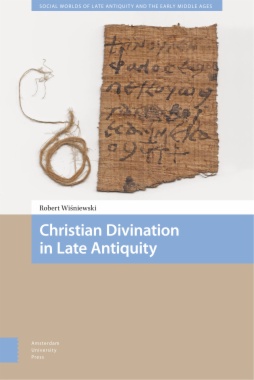In Late Antiquity, people commonly sought to acquire hidden knowledge about the past, the present, and the future, using a variety of methods. While Christians acknowledged that these methods could work effectively, in theory they were not allowed to make use of them. In practice, they behaved in diverse ways. Some probably renounced any hope of learning about the future. Others resorted to old practices regardless of the consequences. A third option was to construct divinatory methods that were effective yet religiously tolerable. This book is devoted to the study of such practices and their practitioners, and provides answers to essential questions concerning Christian divination. How did it develop? How closely were Christian methods related to older, traditional practices? Who used them and in which situations? Who offered oracular services? And how were they perceived by clerics, intellectuals, and common people?
- Cover
- List of Abbreviations
- Introduction
- 1. Attitudes to Divination
- 2. Prophets
- 3. Take and Read
- 4. Books and Bones
- 5. Divinatory Lots
- 6. Interrogating Demoniacs
- 7. Incubation
- Conclusions
- Bibliography
- Index
- List of Illustrations
- Table
- Table 1. The numbers of extant scrolls and codices with the texts of the Hebrew Bible, Greek Old and New Testament, and the Homeric poems (based on Leuven Database of Ancient Books: https://www.trismegistos.org/ldab/).
- Figures
- Fig. 1. Codex of the Gospel of St. John, known as St. Cuthbert’s
Gospel of St. John
- Fig. 2. The beginning of the Sortes Sanctorum in the ninthcentury
codex of Metz
- Fig. 3. A stele with oracular text found in Kremna (modern
Çamlık, formerly Girme) in Pisidia
- Fig. 4. Astragaloi (knucklebones), used, alongside dice, to
choose an answer from oracular texts
- Fig. 5. The Gospel of the Lots of Mary, written in Sahidic
(sixth century)
- Fig. 6. A page from the Codex Bezae with the beginning of the
Gospel of St. John
- Fig. 7. Oracular ticket from Antinoë discovered on 21 October
1984 at East Kom
- Fig. 8. Oracular ticket from Antinoë, still folded and tied with
a string

